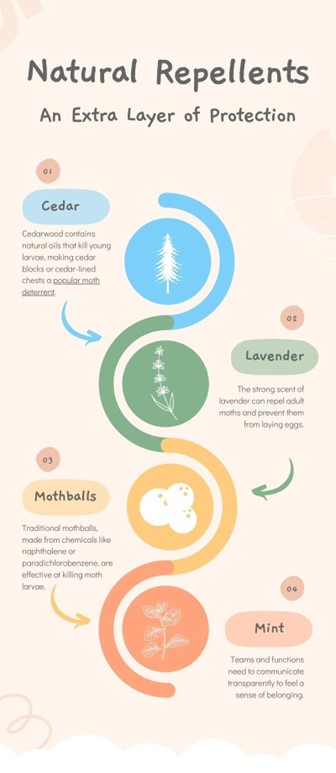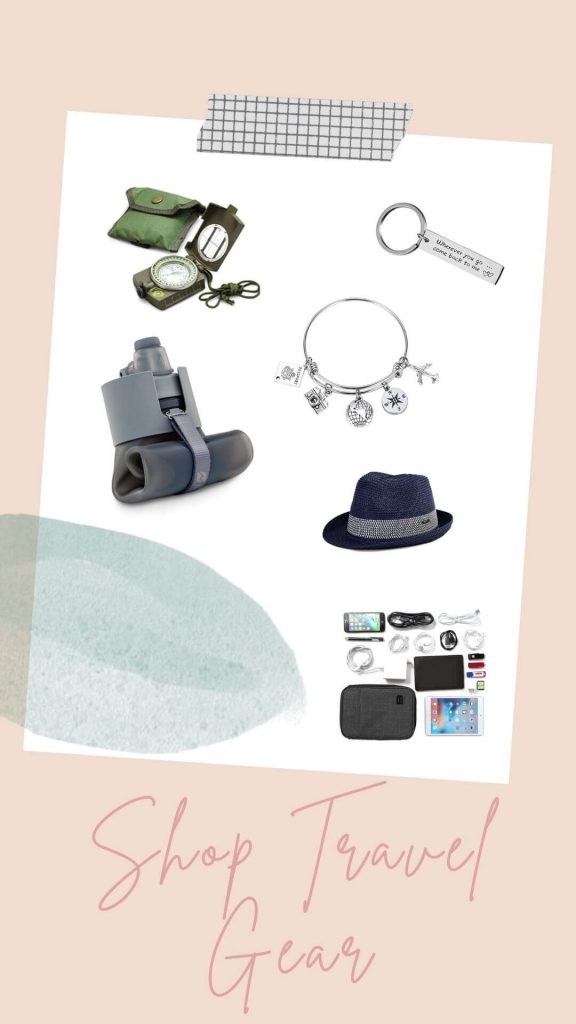There’s nothing worse than opening your wardrobe to find your favorite garments riddled with holes, a clear sign of a moth infestation.
Moths and other pests can cause significant damage to clothing, particularly items made from natural fibers such as wool, silk, or fur. However, with proactive measures and vigilant maintenance, you can protect your wardrobe and exterminate these unwelcome visitors.

Delving Deeper into Clothes Moths
Understanding the enemy is the first step in any battle, and dealing with clothes moths is no different. A thorough understanding of their biology, lifecycle, and feeding habits will equip you with the knowledge needed to eliminate them from your wardrobe effectively.
Clothes moths, or Tineola bisselliella, are small, beige or golden-coloured moths that are often mistaken for harmless creatures. However, it’s their larvae that are responsible for the damage to clothing.
Female adult moths lay tiny eggs on fabric materials, especially those containing keratin, a protein found in natural fibers such as wool, silk, and fur.
These fibers are a veritable feast for the moth larvae once they hatch, and as they consume these materials, they leave behind the all too familiar holes in your beloved garments.
Lifecycle of Clothes Moths: A Closer Look
The lifecycle of clothes moths provides valuable insights into their feeding habits, reproduction, and growth, all of which can be used to target and exterminate them effectively. The lifecycle of a clothes moth consists of four primary stages:
- Egg Stage: Adult female moths can lay hundreds of tiny eggs, often directly onto materials that will provide the larvae with plenty of food once they hatch. These eggs are small and can easily be missed during a cursory inspection.
- Larvae Stage: The larvae stage is the most destructive of all. Once the eggs hatch, the larvae begin to feed on nearby materials. They have a particular penchant for natural fibers but will consume synthetic or cotton fabrics if food sources are scarce. The larvae can exist in this stage from a few months up to two years, depending on environmental conditions and food availability.
- Pupa Stage: After a period of extensive feeding, the larvae spin cocoons and enter the pupal stage. During this phase, they undergo metamorphosis, transforming into adult moths. This stage can last from one to two weeks, again depending on environmental conditions.
- Adult Stage: Adult moths do not feed; their sole purpose is to reproduce and lay eggs to ensure the continuation of the next generation. They have a very short lifespan, usually less than a month, during which they mate and the female’s lay eggs.
Understanding these stages can help you identify the most effective treatment methods. For example, targeting the larvae, the stage causing actual damage, can prevent further destruction of your clothes. Similarly, eliminating adult moths before they can lay eggs can stop an infestation from getting out of control.
Effective Wardrobe Protection Strategies
While knowing your enemy is vital, it’s equally crucial to build strong defenses. In the context of protecting your wardrobe, this means adopting strategies that deter moths and other pests from making your clothing their next meal.
Regular cleaning and maintenance, appropriate storage, and the use of natural repellents can go a long way in keeping these destructive pests at bay.
The Importance of Cleanliness and Regular Use
Moths are particularly attracted to dirty and soiled clothing. Stains, spills, and even perspiration can draw these pests in, providing them with the sustenance they need to grow and reproduce. To keep moths away:
- Regularly clean your garments: Cleaning your clothes before storage can eliminate the food sources that moth larvae need. This applies to all clothes but is especially crucial for items made from natural fibers like wool, silk, and fur.
- Use your clothes regularly: Moths prefer undisturbed places where they can lay their eggs and allow their larvae to feed unhindered. Regularly using and moving your clothes can disrupt this peaceful environment, making your wardrobe less appealing to these pests.
Appropriate Clothing Storage
How and where you store your clothes can significantly impact the likelihood of a moth infestation. Moths thrive in damp and dark conditions, so consider these guidelines:
- Store in a cool, dry, well-ventilated area: These conditions can discourage moths and other pests, and also prevent mildew, which can damage your clothes.
- Use sealed containers or moth-proof bags: To add an extra layer of protection, especially for off-season clothes, use sealed containers or specially designed moth-proof bags. These not only deter moths but can also contain an infestation, preventing it from spreading to other parts of your wardrobe.

Natural Repellents: An Extra Layer of Protection
Although cleanliness and proper storage are vital, you can enhance your defenses by using natural substances known to deter moths. These include:
- Cedar: Cedarwood contains natural oils that kill young larvae, making cedar blocks or cedar-lined chests a popular moth deterrent. However, the effectiveness of cedar can decrease over time as the wood dries out.
- Lavender: The strong scent of lavender can repel adult moths and prevent them from laying eggs. Lavender sachets can be a pleasant, natural alternative to chemical mothballs.
- Mothballs: Traditional mothballs, made from chemicals like naphthalene or paradichlorobenzene, are effective at killing moth larvae. However, they can be harmful to humans and pets if improperly used, and their strong odor can be off-putting to many people.
These natural repellents are more effective as preventative measures and may not be sufficient to eliminate an existing, extensive infestation. For such cases, professional pest control intervention might be necessary.
Exterminating Moth Larvae
In case of an infestation, immediate action is required to exterminate the larvae and prevent further damage.
- Thoroughly vacuum the wardrobe and surrounding area to remove larvae and eggs. Be sure to immediately dispose of the vacuum bag outside.
- Wash infested clothes in hot water if the fabric allows, or dry-clean those that can’t be washed. Heat can effectively kill eggs and larvae.
- Freezing is another method to exterminate moth larvae. Place the infested item in a sealed bag and put it in the freezer for at least two weeks.
In severe cases, you might need to hire a professional pest control service to ensure all stages of the moth life cycle are addressed.
Protecting your wardrobe from moths and other pests requires regular maintenance, proper storage, and swift action in case of an infestation.
By understanding the nature of these pests and implementing preventative measures, you can keep your garments safe and pristine.
However, in the case of an established infestation, don’t hesitate to seek professional help to effectively exterminate these unwelcome intruders.
This post contains affiliate links, which means we may receive a small commission, at no additional cost to you, if you make a purchase through these links.
Photo by Burgess Milner on Unsplash
More Reads














